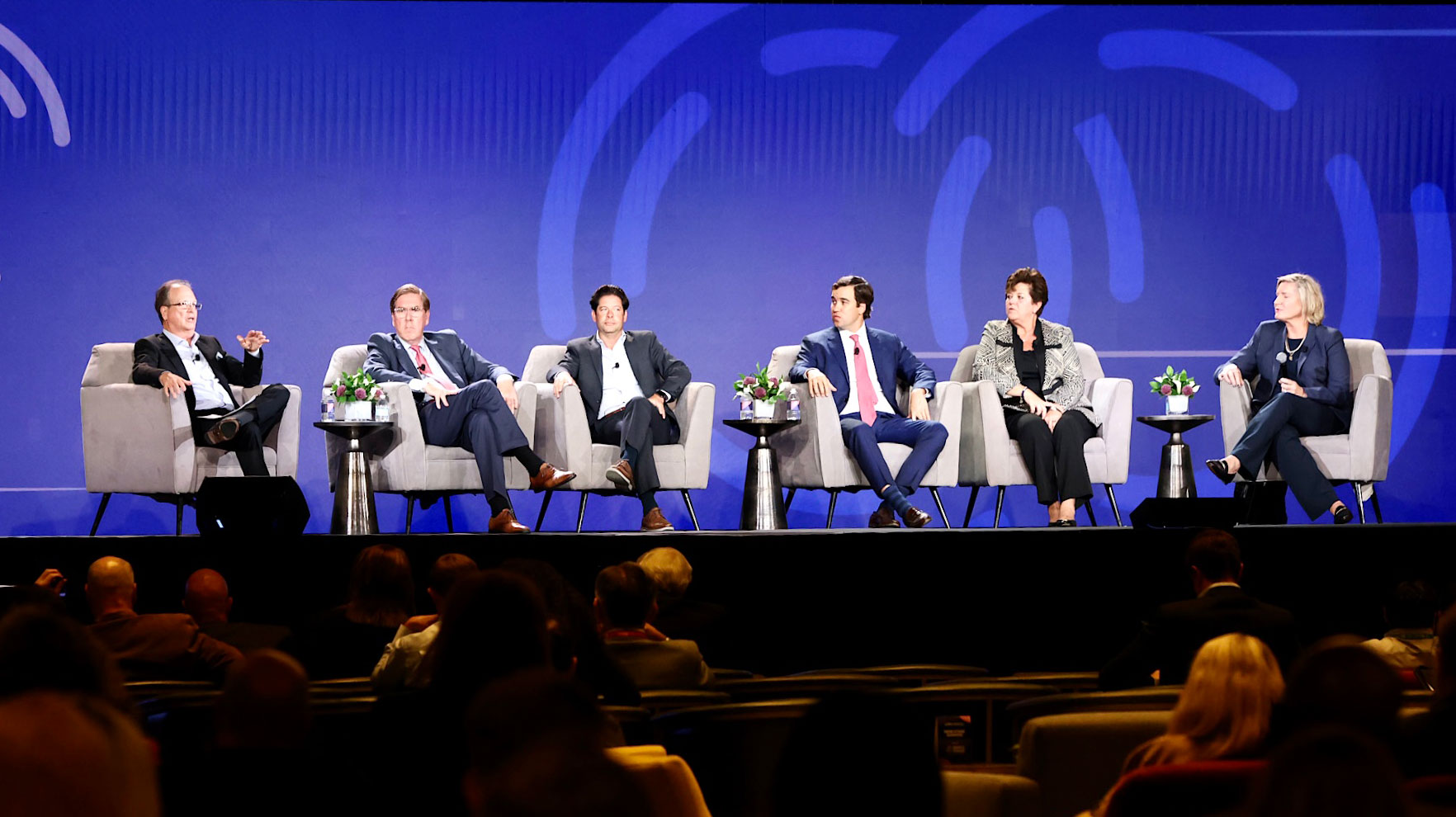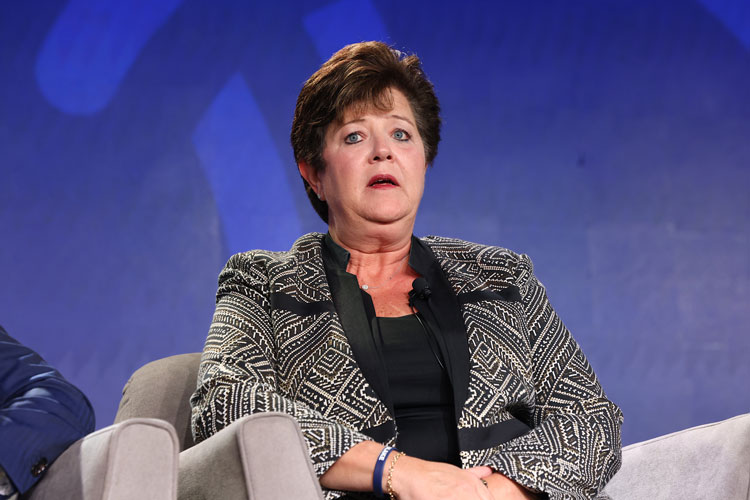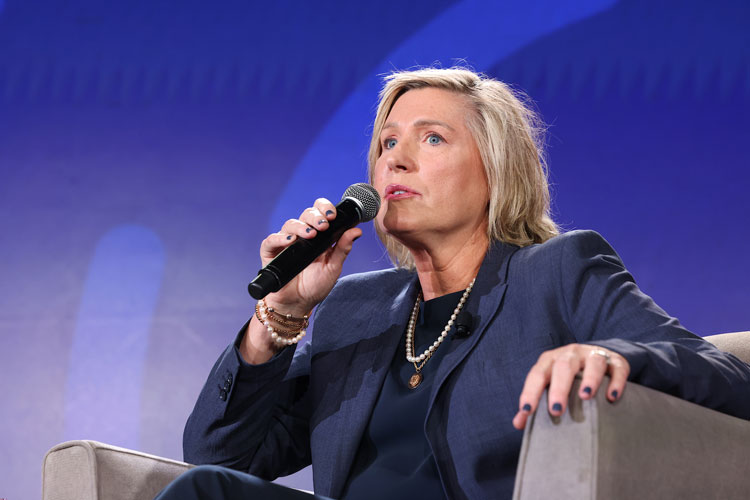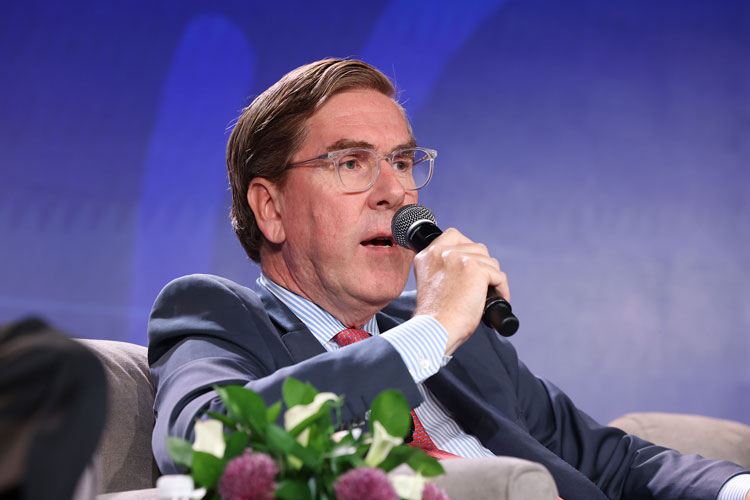WASHINGTON, D.C. — Greystar’s Jackie Rhone, a 35-year veteran of the multifamily industry, cut right to the chase when describing how the active adult niche differs from the traditional apartment sector in one big way for owners and operators.
“This is the only time in my career that I’ve sold a lifestyle. I’m not selling four walls. They don’t care what your backsplash looks like. They want it to be nice, but that’s not what’s driving them,” said Rhone, referring to prospective residents of active adult communities. “What’s driving them is a lifestyle that you’re creating, and you can’t create that unless there are people living in your building that are showcasing that lifestyle.”
Rhone, who earlier this month celebrated her 21st year with Greystar, serves as executive director of US Real Estate Services – Active Adult for the company. Under her watch, since mid-2019 Greystar’s active adult portfolio has grown from about 5,000 units and 27 properties to 17,000 units and 95 properties across 24 states.
Her remarks came Wednesday during a panel discussion titled “Rational Exuberance: Investing in the Rapidly Growing Active Adult Segment” on the opening day of the 2022 NIC Fall Conference.
Approximately 2,800 professionals descended on the Marriott Marquis in downtown Washington, D.C. for three days of networking, deal making and educational sessions. The number of attendees was up 15 percent from last year’s conference, according to the National Investment Center for Seniors Housing & Care (NIC).
Mitchell Brown, principal of Senior Housing Consulting, moderated the active adult session. In addition to Rhone, other panelists included Joe Fox, co-founder and co-CEO, Livingston Street Capital; Todd Goldberg, managing director of transactions, PGIM Real Estate; Chad Lavender, vice chairman, healthcare and alternative real estate assets, Newmark; and Kathleen Ryser, senior director of seniors housing underwriting and credit, Freddie Mac.
One key to Greystar’s successful expansion efforts has been a significant increase in the pre-leasing activity for new ground-up development projects , according to Rhone. In 2019, about 9 percent of the units on average were preleased upon project delivery, and today that figure is 35 percent.
The lease renewal rate across Greystar’s 95 properties was 79.2 percent in August. Meanwhile, the company is seeing double-digit rent growth on lease trade-outs — north of 20 percent in some markets.
The question going forward is whether the sector can avoid overbuilding, said Rhone. “Are we ever going to get to an oversupply [situation] because there are so many markets where we’re being inundated with active adult product?”
She cited Dallas/Fort Worth as a prime example. “We have over 20 assets in the DFW metroplex, and there are many others. We do have to be careful, but as everybody said, ‘Look, we have a demographic base that is as deep as many of our markets.’ So, I do believe in the space wholeheartedly.”
Through the pandemic, active adult was a standout performer among Greystar’s various business lines, according to Rhone. “We stayed at the very top for customer satisfaction, we stayed at the very top for collections. There were zero write-offs/bad debt. And we were still able to increase occupancy month over month.”
Investors get clarity
Just hours before the panel discussion, NIC released a white paper defining the active adult rental property type. Up until now, potential investors have lacked a common understanding of this segment. Here’s the official definition: “Active adult rental properties are age-eligible, market-rate, multifamily properties that are lifestyle-focused; general operations do not provide meals.”
Age-eligible means that at least one qualifying resident in the household must be age 55-plus, 62-plus or 65-plus, depending on the local governmental jurisdiction.
The definition puts a framework around the active adult category and will pave the way for centralized data collection on the growth and performance of the sector, according to NIC.
Freddie Mac’s firm commitment
Since 1998, Freddie Mac has funded $28 billion of seniors housing loans in support of over 1,800 independent living and assisted living properties nationally, according to Ryser. Historically, the age-restricted segment at Freddie Mac had been underwritten as part of the agency’s conventional multifamily business. But this year the seniors housing group took over underwriting this business segment.
Typically, Freddie Mac’s loan terms are for 10 years. Ryser said that the agency lender is primarily focused on the overall cash flow of the properties. More specifically, Freddie Mac evaluates what type of specialized management it will take to operate the property, and if there is any refinance risk.
Ryser pointed out that the operating margins and cap rates are completely different for active adult than they are for independent living and assisted living, which can pose some challenges.
Freddie Mac is currently weighing the potential for “acuity creep” to set in at active adult properties as residents age in place.
Rhone is seeing no evidence of acuity creep in Greystar’s portfolio. “What’s really interesting is our average age has gone backward, it hasn’t gone forward,” she said. The average age of a Greystar resident across the portfolio today is 71, down from 76 six years ago.
“A lot of that was through the pandemic. We had a lot of people move who were in single-family homes that wanted the community feeling. They didn’t want to be isolated,” explained Rhone. “They didn’t want to be alone. We’ve also seen the number of prospective renters walking through our door. Fewer and fewer now still have homes to sell, which is a big change from just a few years ago.”
Unfazed by the pandemic
Fox of Livingston Street Capital said his firm has been an active buyer of 55-plus active adult communities since 2018, which was relatively early in the cycle.
“I come from the seniors housing development side — independent living, assisted living and memory care communities. So, it was very natural to us to identify this asset class from a demographic and performance standpoint. What we like about it is the oldest boomer today is 76. This segment of the population is living longer and they’re living healthier, and they’re living differently.”
Fox has observed significant cap rate compression in the active adult space. Perhaps that’s because the sector has performed extraordinarily well.
“During the pandemic, across our portfolio we had 99 percent collections, and we were in business, meaning we weren’t shut down like the assisted living communities. Certainly, we took a lot of precautions, and we did a lot of different things to protect the community, but we were still engaged and people could come in and out freely in our communities.”
What does Fox see as some of the biggest advantages of investing in the active adult space?
“Rents are significantly higher than multifamily, and they’re significantly lower than independent living and assisted living at the end of the day. I see it more of a tweener, but I also see it as an asset class that is here to stay and should continue to perform well over the long term. Certainly, the evidence so far supports that. We’ve had great rent growth; we’ve had great occupancy.”
Lavender of Newmark pointed out that the average length of stay in an active adult community is nearly five years. “You are only turning over your building 20 percent a year versus multifamily, which is closer to 60 percent, versus seniors housing at close to 70 to 80 percent. So, you have a lot longer stays.”
The absence of oversupply in most markets has helped provide even more of a tailwind to the active adult sector. The industry is 97.5 percent occupied, according to Lavender. “You have a really sticky resident tenancy that has a bunch of cash in their pockets because most of them have sold their homes and are a great payor.”
— Matt Valley




